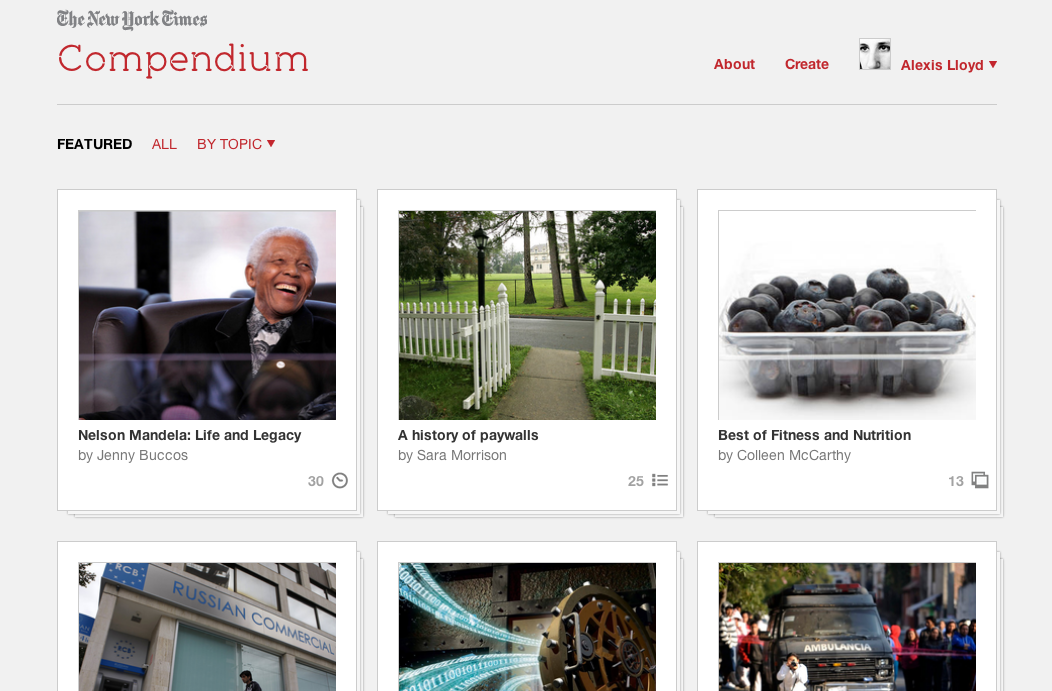

People often create collections from New York Times pictures, articles and information. We've seen everything from personal scrapbooks of world events, to lists of links about climate change for use in classrooms. The act of collecting gives our readers a level of control, and even authorship, over the information they like best from The Times, and reveals links among stories across the breadth of our 160-year-old archive. The R&D Lab has been studying these different relationships and collections, and realized that these use cases present a unique opportunity to develop a simple tool that our readers can use to more effectively compile and present collections of New York Times content.
With this inspiration, the R&D Lab created Compendium: a tool that invites readers to use New York Times articles, images, videos and quotations to tell their own stories. You can write an overview of the collection as a whole, and you can annotate each item to describe what's important, interesting or funny about it. Once created, your collection can be shared or linked to from anywhere. Compendium is also a great place to discover and explore interesting stories through a wide variety of collections created by our readers, editors and reporters.
Although services similar to Compendium exist, we found them to be either too open-ended, leaving the burden of creation completely on the user (WordPress, Tumblr) or too restrictive to one particular kind of asset (Pinterest). With information published by The New York Times as the starting point, you can use all of the structured data that goes along with each story, picture or video to augment the collection. Just by selecting the items you want, you can order them by their publication dates, group them with collections that have items from similar categories of coverage, and display all the credits, captions, and bylines that originally accompanied those items.
